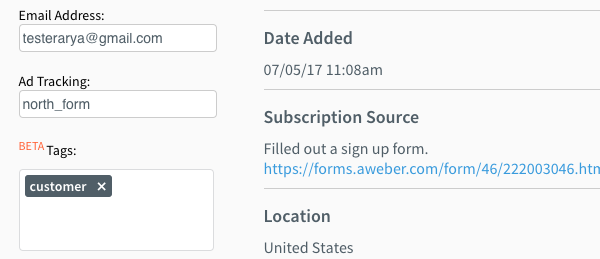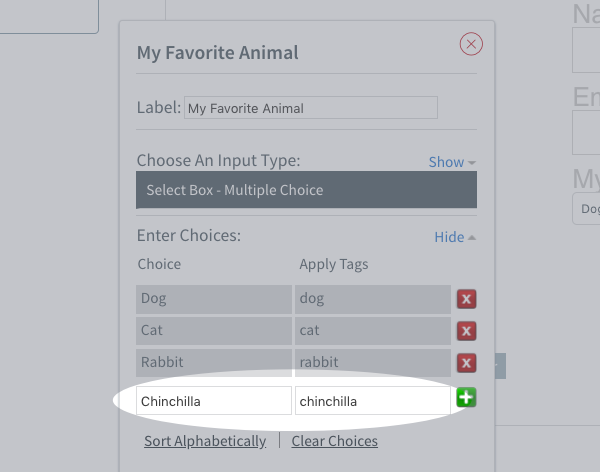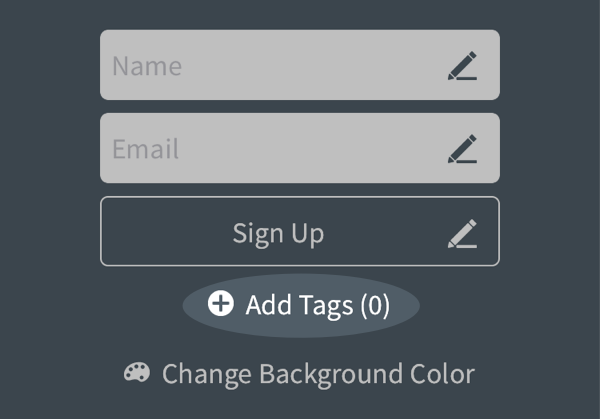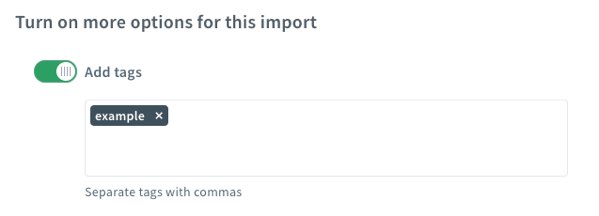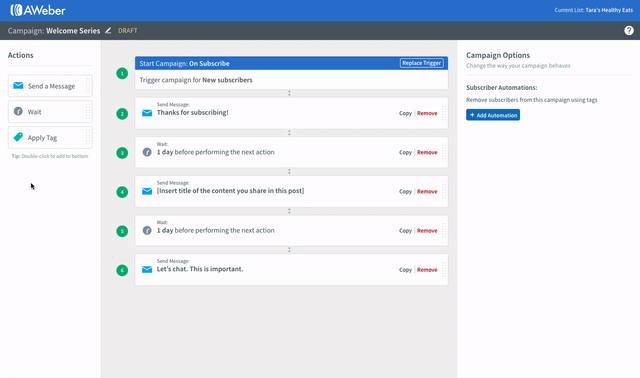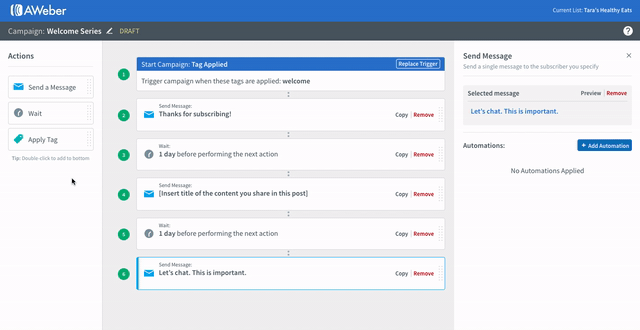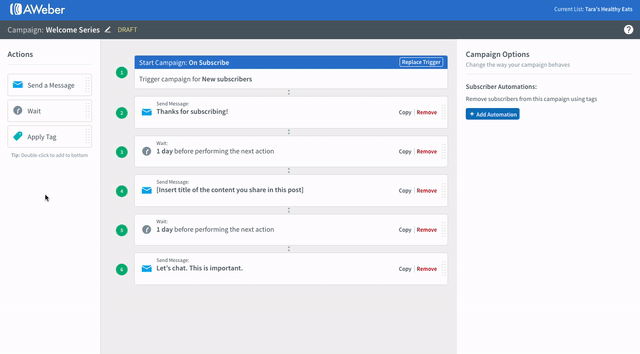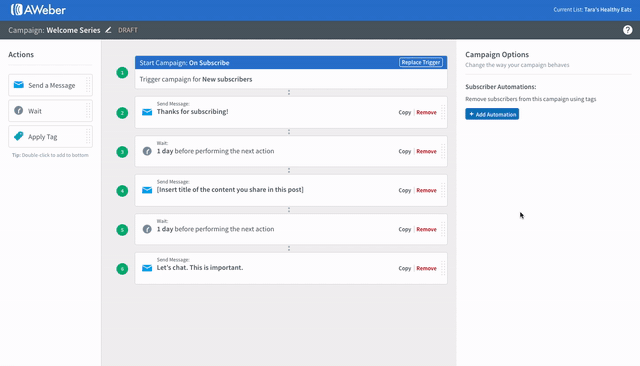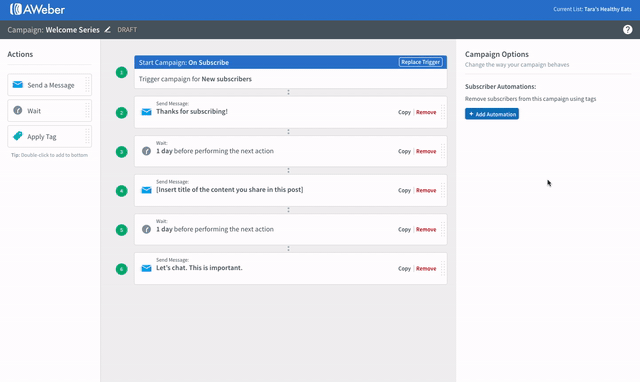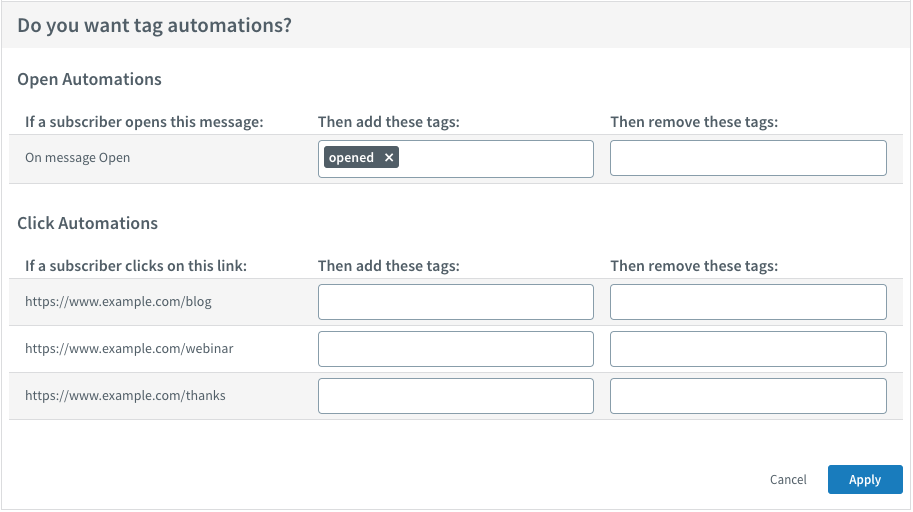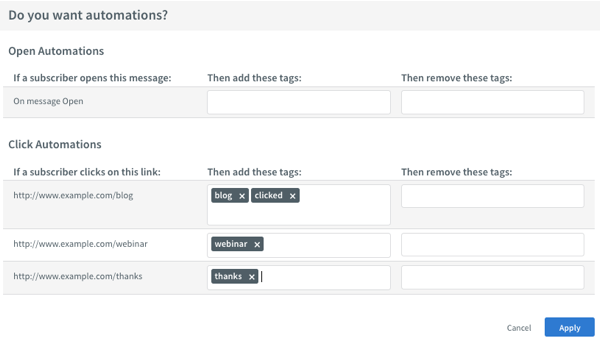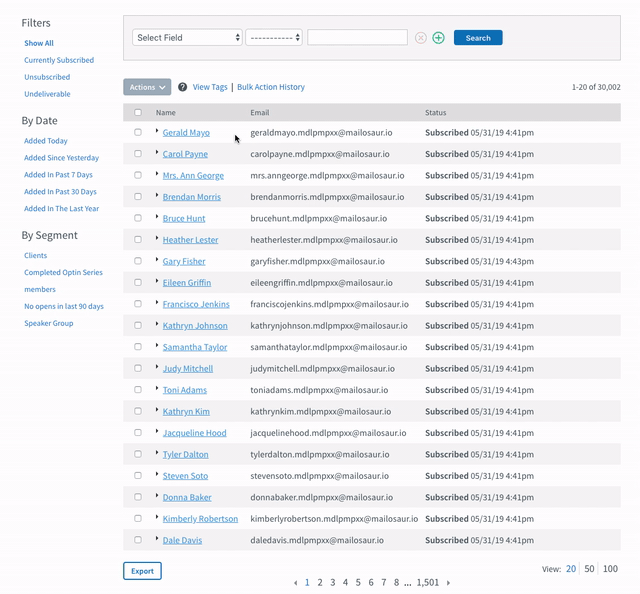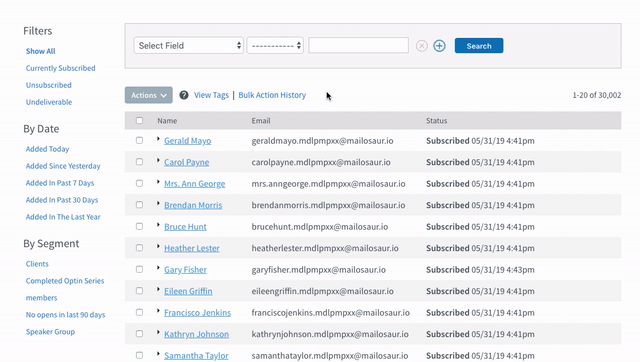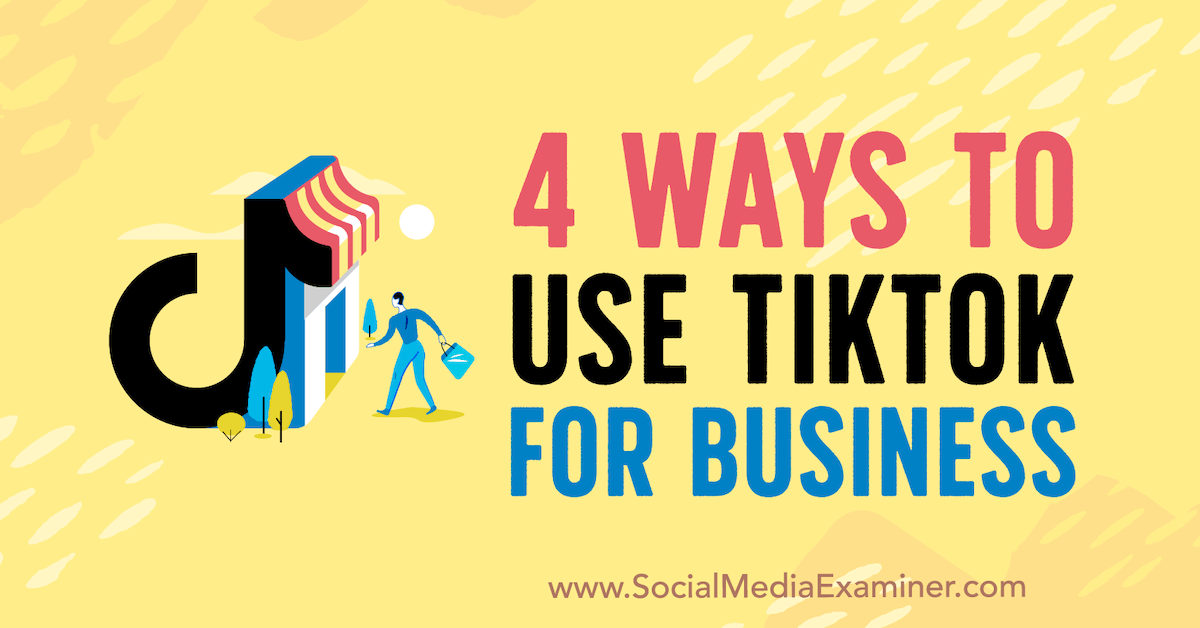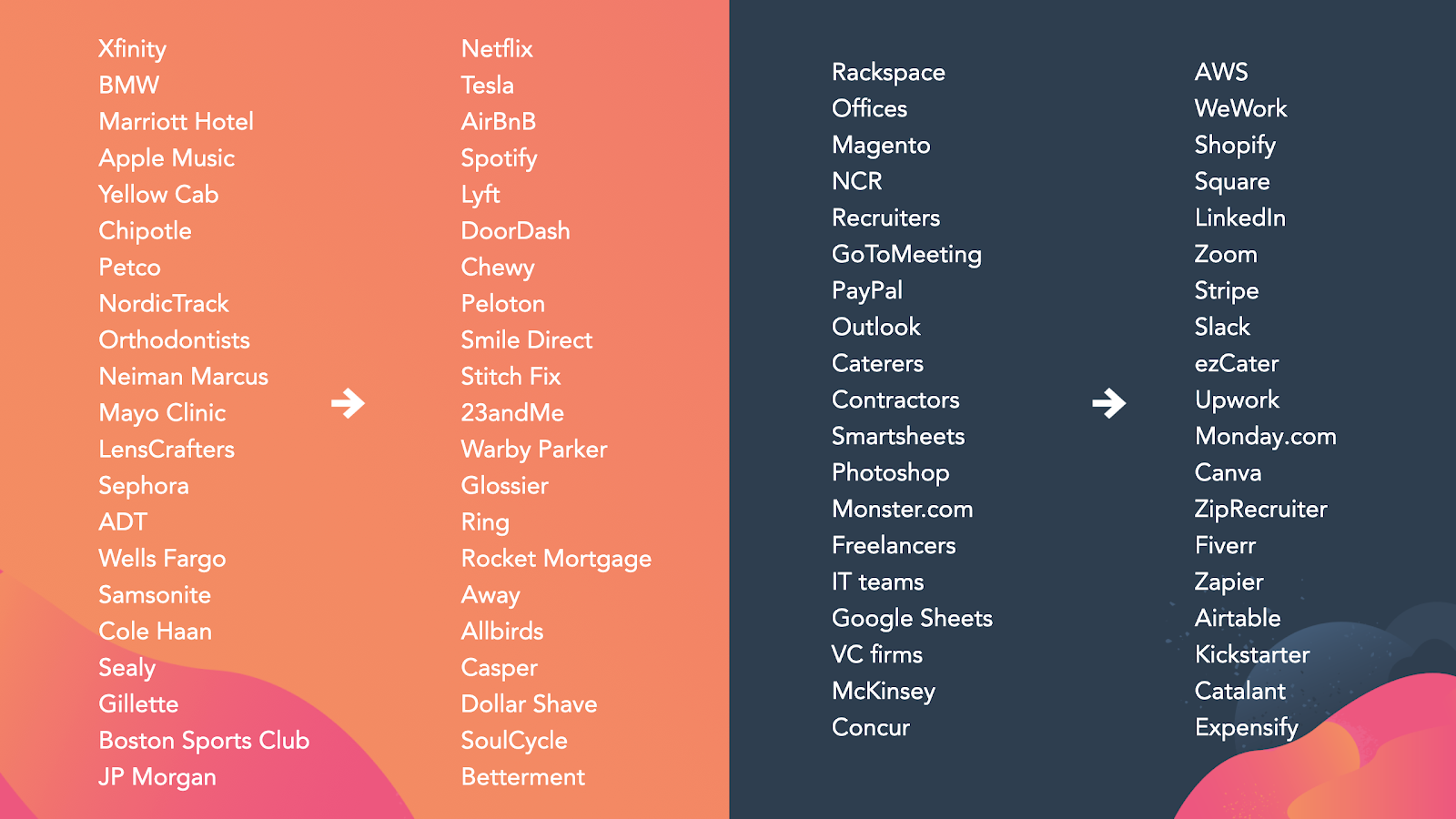The Future of Ubersuggest

* Please read the whole post, I have some good news at the bottom, but it won’t make sense unless you read the whole post.
Do you know why I got into SEO?
Not many people know this, but I grew up in middle-class America, and I wanted a better life for me and my parents.
When I was 16 years old, I worked at a theme park called Knotts Berry Farm where I picked up trash, cleaned restrooms, and swept up vomit every single day.
I didn’t mind it because that’s life and I needed the money.
At 16, I realized I was too young to get a high paying job, so I did the next best thing… I started a business.
But making $5.75 an hour picking up trash wasn’t enough to market my business, though. The only solution that I could think of was SEO because if you put in the time and effort you can get the traffic for free.
It’s also the main reason I fell in love with it… it
gives the little guy a chance to compete with the big guys.
And over the years I wanted to pay it forward and help out all of the entrepreneurs and small companies so they can do the same… succeed without having to spend a lot of money.
So, what did I do?
Well over the years, I’ve produced a ton of free content, videos, and guides that help entrepreneurs and marketers of all sizes succeed.
And in February 2017, I decided to take it to the next level by acquiring Ubersuggest for $120,000.
When I first bought it, I had the dream of creating an SEO tool that could compete with the big players that charged $100+ a month, but of course, offer it for free.
The developers that I had at that time estimated that I could do this for $30,000 to $45,000 a month. That was perfect as I had no issue losing that much money each month.
But as we got rolling and kept adding in more features, our
expenses continually climbed. Just look at what I spent in the last month…
I spent $89,930 on hosting so far in January with an estimated spend of $128,680 for February. But again, let’s stick with January…
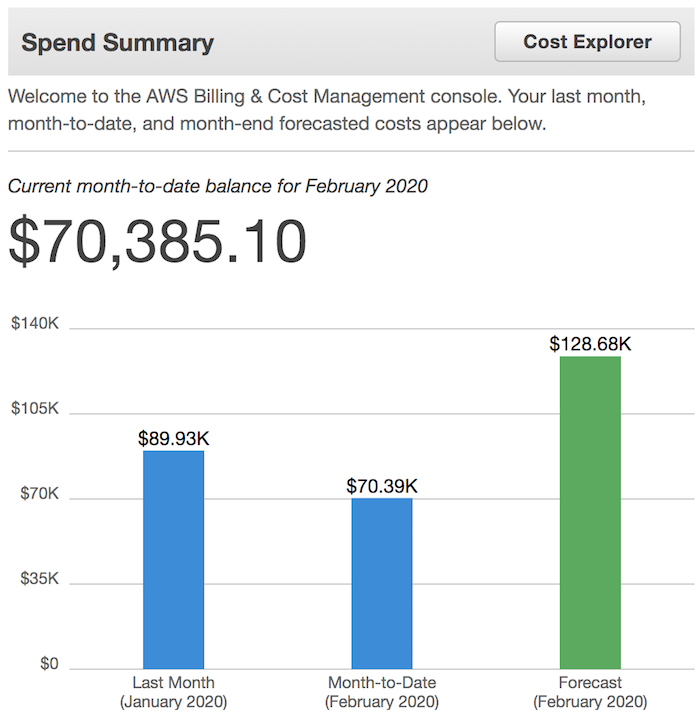
My back-end development bill from Tryolabs was $47,885 for January.
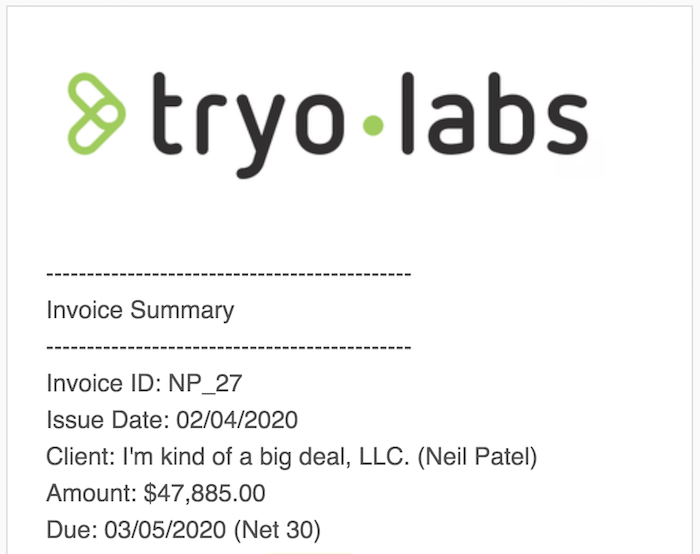
My data feed from SEO Power Suite, Data For SEO, and Shared Count totaled $75,253 for January.
And of course, my front-end developers as well as my dev-ops team Netlabs, which ran me $22,700.
Then if you add on miscellaneous costs, such as support, design, and project management, I was out another $11,450.
All in all, I spent $247,218 during the month of January 2020.
Keep in mind that my costs are continually rising. As the tool gets more popular, it costs me more.
One of the big reasons for the server expenses is scrapers.
Believe it or not, a lot of companies are scraping our data and continually rotating up IPs and creating fake accounts, which increases our server expenses. Especially when you consider that they are researching vague SEO terms or domains that aren’t cached in our system.
Don’t feel bad for me
Now the purpose of this post wasn’t to make you feel bad or guilty (unless you are scraping me). I just wanted to be transparent about my situation.
Originally, I was hoping that I could convert a portion of the Ubersuggest customer base into agency clients but as we continually move upstream and work with bigger brands, the conversion rate from an Ubersuggest visitor to a paying consulting customer has been low.
As that didn’t work out the way I wanted, which I learned around 11 months ago, it became harder and harder for me to eat the costs as they continually grew and I didn’t have a way to pay for them other than to dip into my own savings.
So, I started searching for solutions, such as turning
Ubersuggest into a non-profit and raise money from foundations to help support
the cost. I tried that for 5 months and I didn’t gain much traction.
I also tried to see if I could get sponsors for the tool who would help cover the costs, but that didn’t work out well either. Instead, many of them offered to buy the company for millions of dollars (some in the 8 figures) but I didn’t want to sell it as I knew their goal would be to turn it into another $100-a-month tool, which didn’t sit well with me.
After running out of options, I had no choice but to make some changes to Ubersuggest (don’t worry it is not closing down). But you can guess what the changes are.
But don’t worry…
First and foremost, my goal is still to give as much away for free as I can. Within Ubersuggest, you will still be able to do a lot for free…
Creating projects
You will always be able to create projects and track your rankings. And just like before you always have been limited on the number of keywords you can track and that, of course, is due to costs.
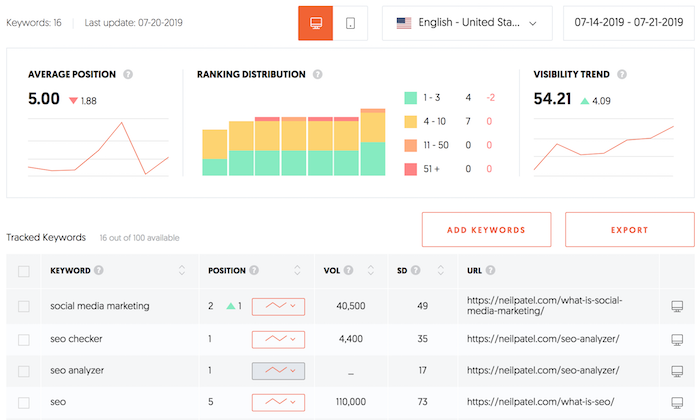
Keyword research
Within the app, you will still be able to see keyword research data.
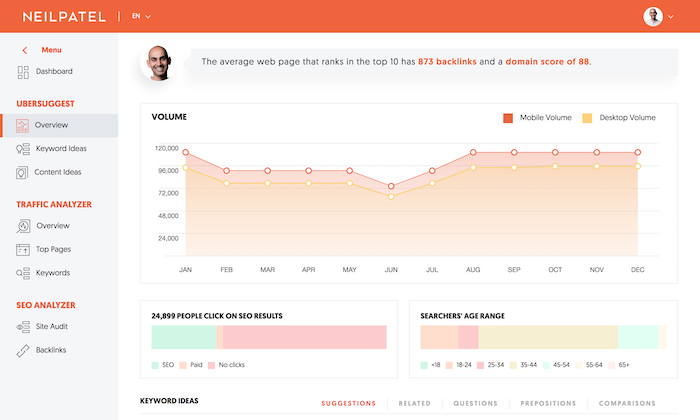
You’ll see a chart with the latest few months’ traffic volume, data on mobile versus desktop search volume, demographic data, and even keyword recommendations.
And you can, of course, continually find new keywords to target.
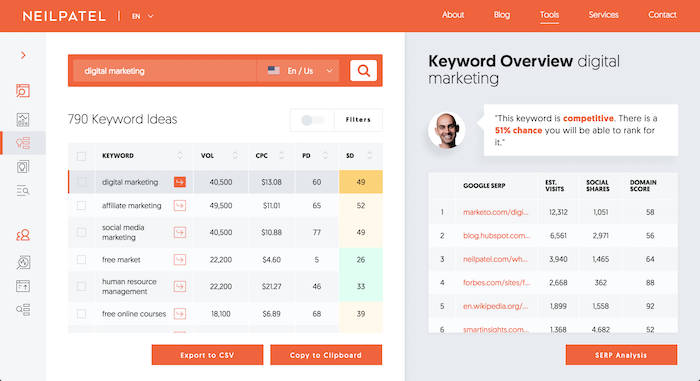
Sure, some of the data is blocked, but did you know that
only 14.3% of people used to register for a free account to unlock that data.
In other words, most of you never even registered because the application shows you enough for free without needing to log in.
Content ideas
Similar to before, you can also see popular blog post suggestions for any given keyword.
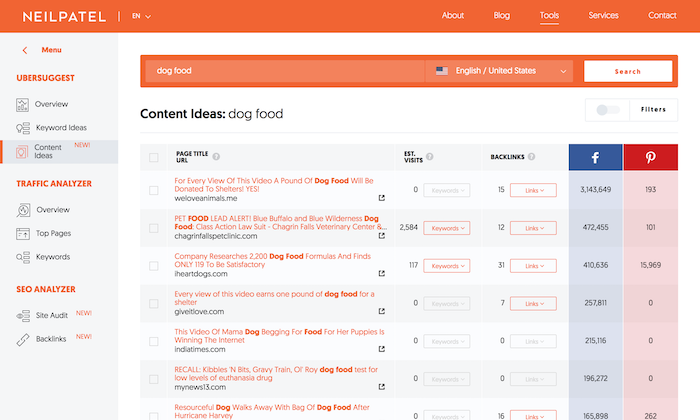
You’ll also be able to see the top keywords a blog post
ranks for and the backlinks pointing to that URL.
Again, keep in mind the majority of you only looked at the
top 10 results as 14.3% of you registered for a free account to unlock more
data.
Traffic Analyzer
You will still be able to look up any domain and get stats
on it.
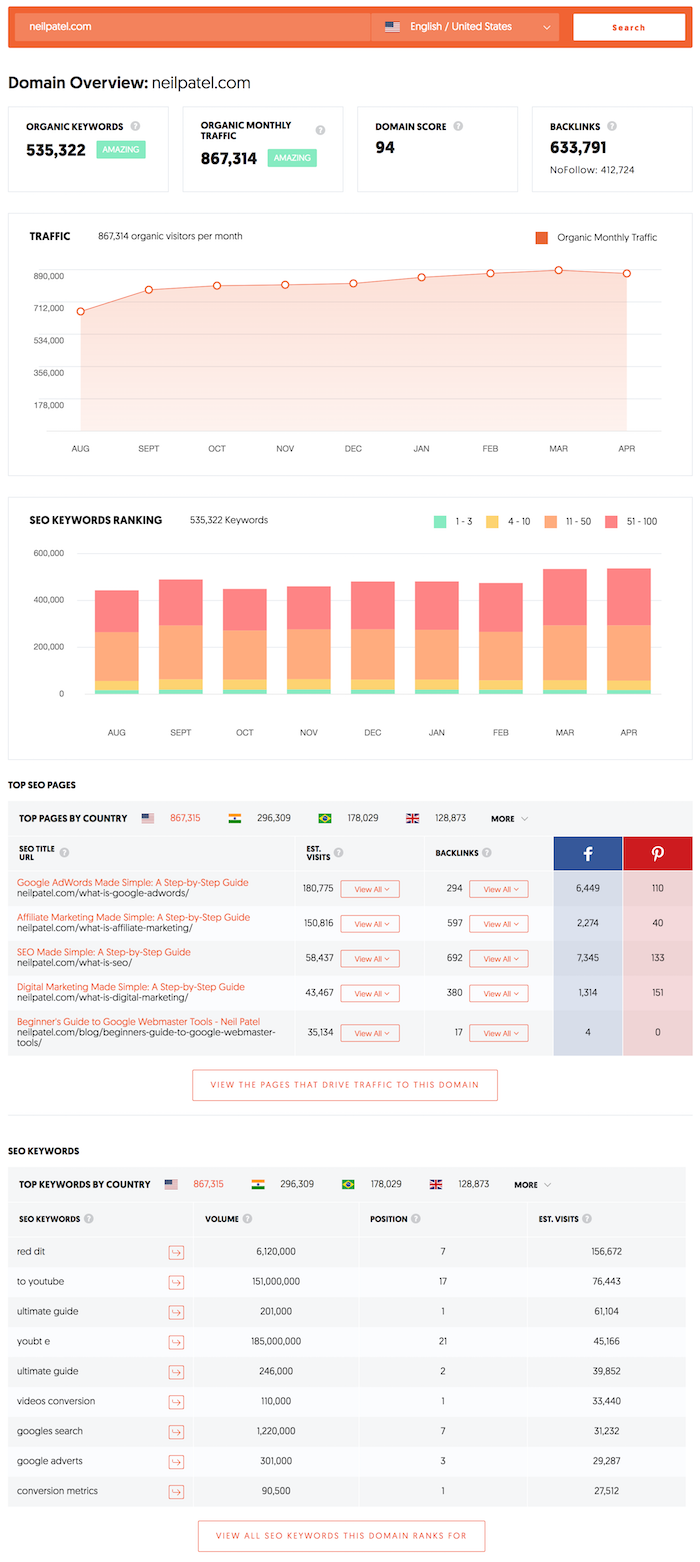
Historical data is blocked, but you can see the last few
months which is enough for most of you.
You’ll also be able to see the top pages for any domain and the keywords that page ranks for as well as backlinks.
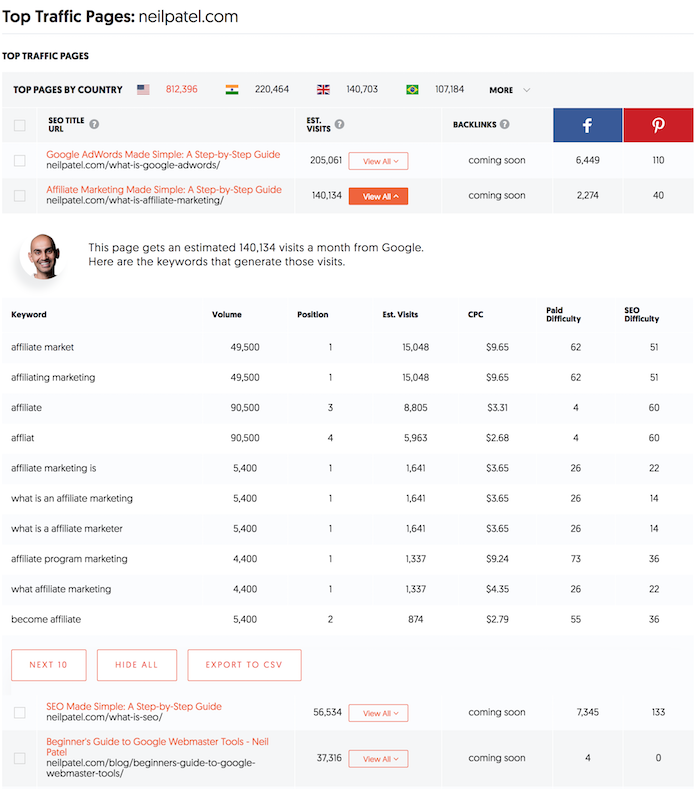
The same goes for the keywords any domain ranks for.
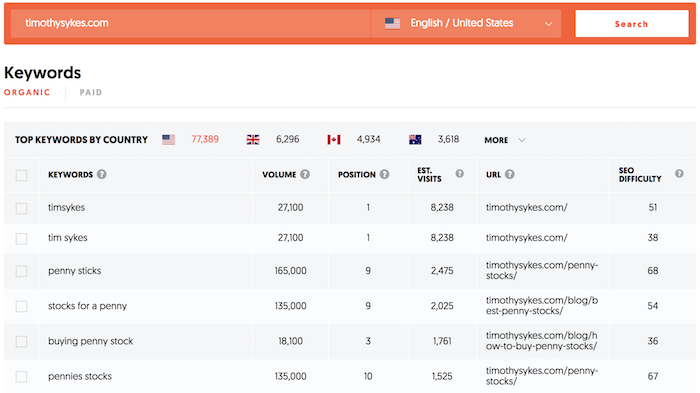
Some of the data is blocked, but just like before only 14.3%
of you registered to view that data. Which means 85.7% of you are happy with
the free data.
SEO Analyzer
Not much has changed here, you can still analyze over 100 pages on your site and figure out which errors you have.
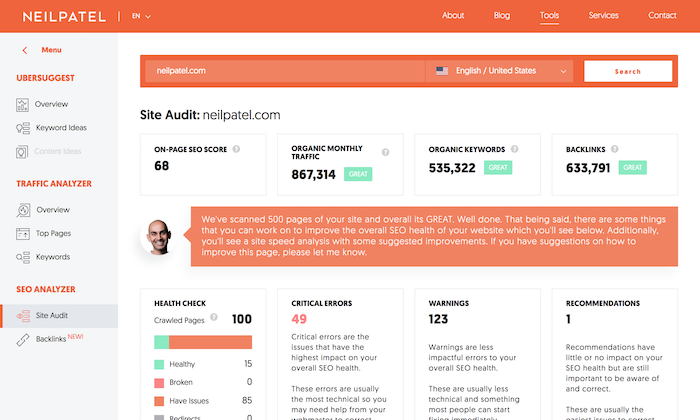
Here’s an interesting fact: Did you know the average site that goes through Ubersuggest only has 48 pages?
The median number of pages a site has in our system was similar at 43 pages.
And of course, there is the backlinks report, which now
shows new and lost links as well as historical link growth.
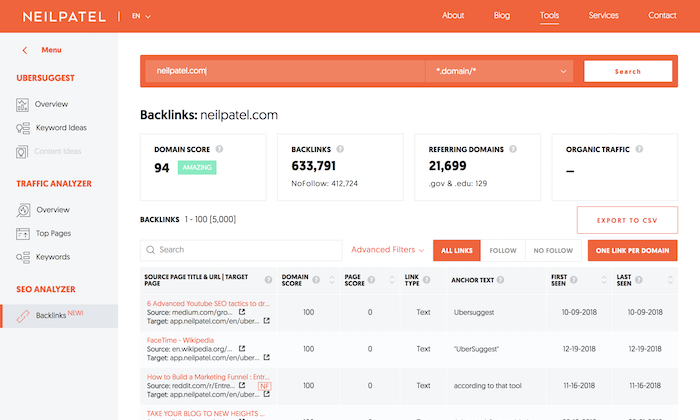
Similar to what I mentioned above, very few people really cared to see the blocked off information as only 14.3% of you registered.
My dream
My goal in life is to help people generate more traffic. And I believe Ubersuggest can get better results and give you a fighting chance.
I also want to continually make the tool better. For example, why can’t SEO be automated? If you can have self-driving cars, there is no reason why you can’t automate SEO through artificial intelligence and machine learning.
But with the rising expenses, I was left with 2 options… either shut the tool down (which isn’t an option for me) or figure out a way to cover my expenses.
In the long run, I can’t keep sustaining the loss of $247,218 a month forever, especially when that number is climbing (that’s roughly 3 million dollars a year).
My team and I came up with an interesting concept that we think is fair and hopefully, you won’t be upset about it.
Remember how I said only 14.3% of people register to view more data but 85.7% never register as they were happy with the free data?
Well, nothing will change for 85.7% of you.
As for the 14.3% who register to create projects and track keywords, you can still do that for free. But if you want to add more projects or track a lot more keywords, you can upgrade to a paid plan.
The same goes for keyword research. If you want to view even more data, you can pay for the blocked data. Or if you want to analyze thousands of pages on your site through the site audit, you can also upgrade.
Don’t worry though, I am still following my original
mission.
I promise to always keep Ubersuggest affordable (and mainly free). I decided to take the Netflix/Amazon approach and try to make the cost super affordable (as my goal is to only break-even).
On top of that, I made it a 7-day free trial.
You’ll also find that the pricing varies per country as my costs vary per country. In regions like India and Brazil when someone registers, creates a project and tracks keywords, my expenses are substantially lower than if someone from the United States registers and creates projects and tracks keywords.
The same goes for labor. My support team in India and other regions costs substantially less than the team in the United States or the United Kingdom.
If you also pay annually, you’ll get 2 months free so you can save even more money.
And as I mentioned above, I want to stick to the original mission, which is to help people generate more traffic without having to spend a lot of money.
There will always be a very generous free plan and I am hoping that I can break even by charging for a portion of the application.
What’s next?
Ubersuggest is going to continually get better.
To make things up to you, over the next month or two I am going to release a Chrome extension that will give you tons of insights for free. And of course, if you want a little bit more you can pay.
Here’s what the free extension will look like…

Whenever you perform a Google search you will be able to see
the volume for any search term in any major country. And if you click the “view
all” link you will see more data on that keyword.
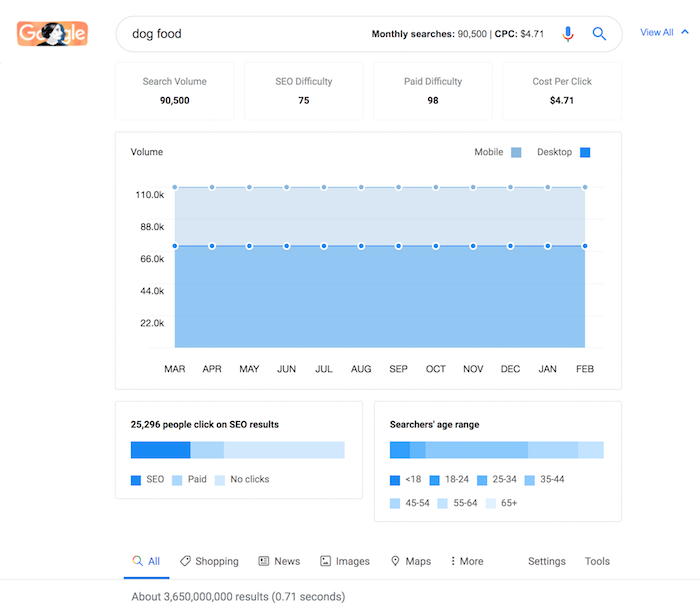
You’ll also see the average domain score for any given
ranking page and the number of links you need to rank in the top 10.
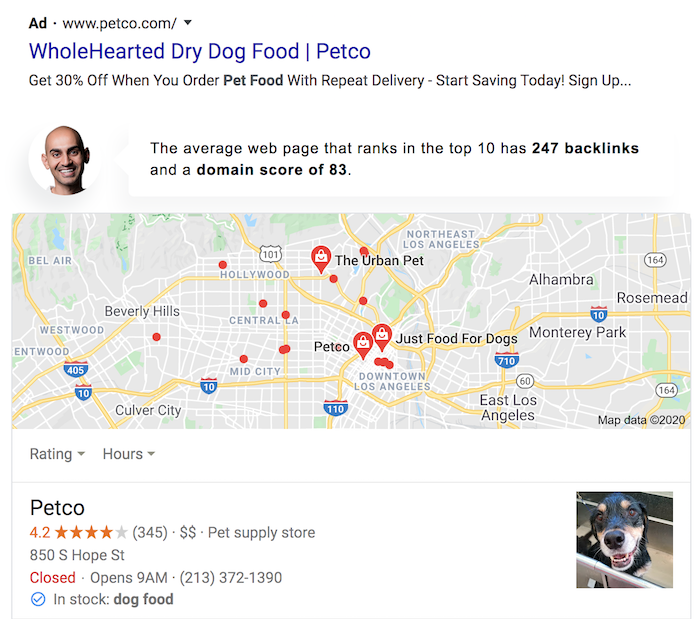
As you scroll down and go through each of the ranking
results, you’ll see the domain score for each URL, social shares, and the
backlinks pointing to that search result.
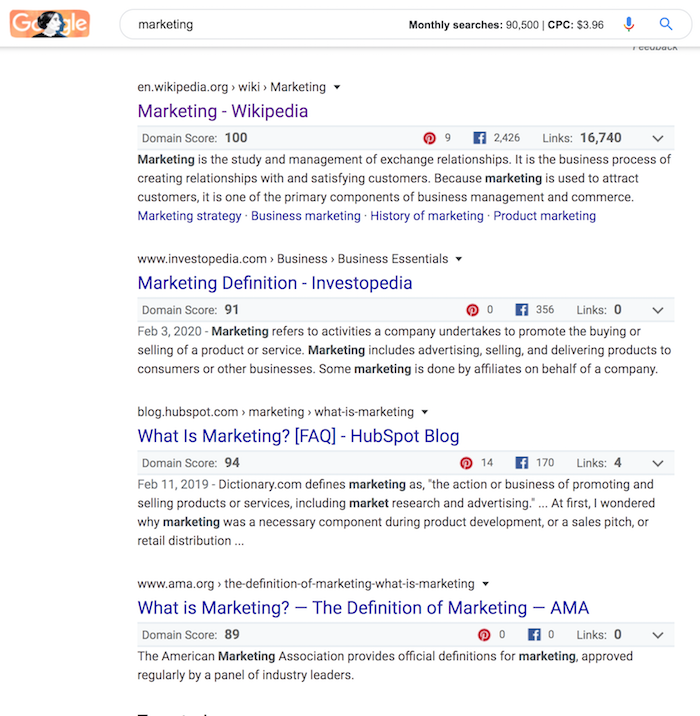
You can even drill down and see the top links pointing to
each URL.
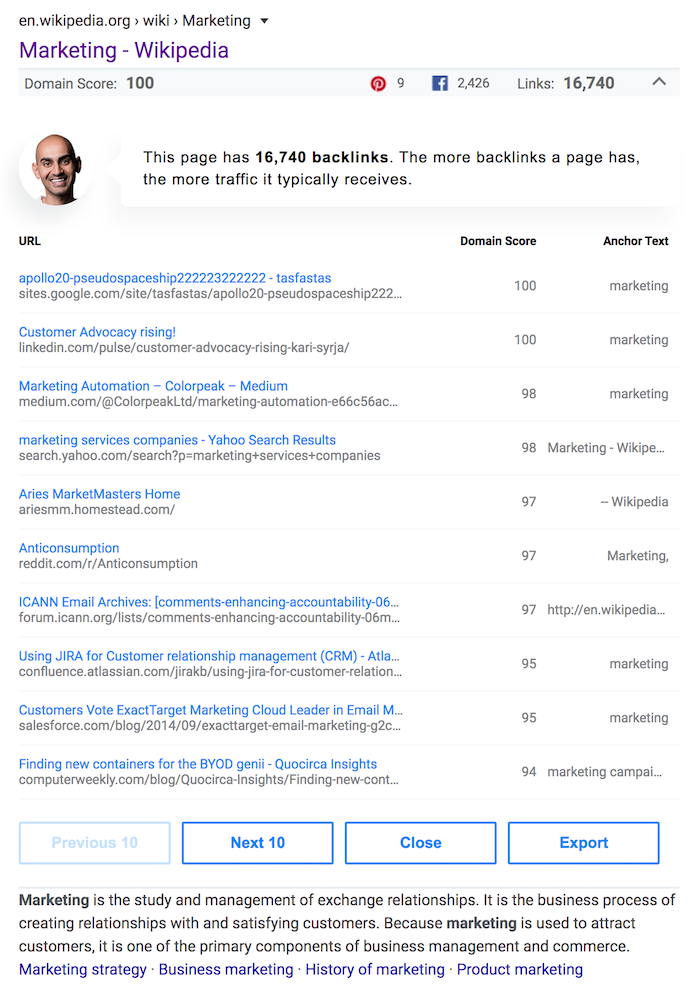
Now if you head over to the sidebar, you’ll see a list of
related keywords as well as data on the top 10 keyword recommendations.

If you scroll a bit more, you’ll see a graph that shows how many backlinks each result has so that way you can see how many backlinks again you roughly need to rank in the top 10.
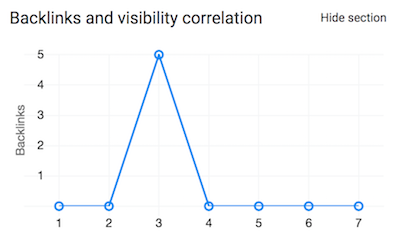
At the very bottom of the search results, you’ll see data on related keywords.
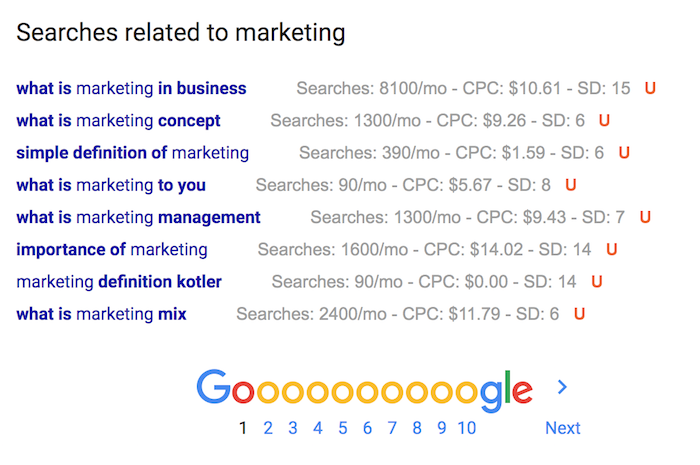
As time goes on not only will you have the extension, but I
will continually add more and more features for free.
Conclusion
I’m sorry that I have to start covering my costs, but I hope
you understand at the same time.
From my projections, it will take me roughly 6 months to break even, so I am going to be out a decent amount of money over the next 6 months… but that’s life.
I am not looking to recuperate my original investment and I don’t mind that being a loss, but once I break even on a monthly basis I will continue to either open up more stuff for free or consider lowering the monthly pricing if possible.
Again, I am really sorry, but I hope you understand that it isn’t sustainable for me to spend $247,218 a month indefinitely.
I am open to hearing your thoughts or ideas. I also want to let you know I appreciate everything you have done to support Ubersuggest and my site.
The post The Future of Ubersuggest appeared first on Neil Patel.

